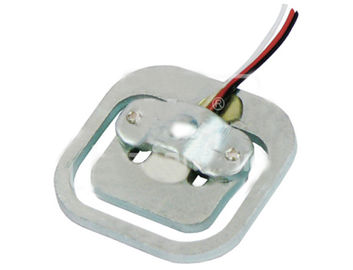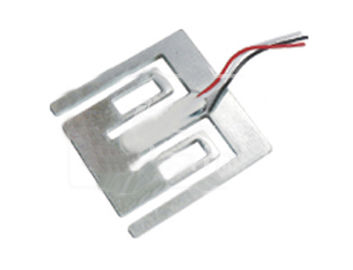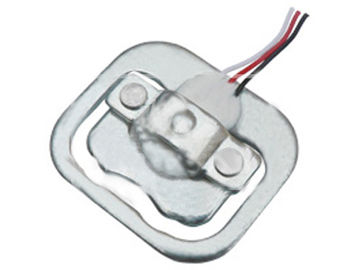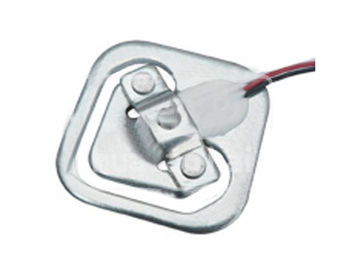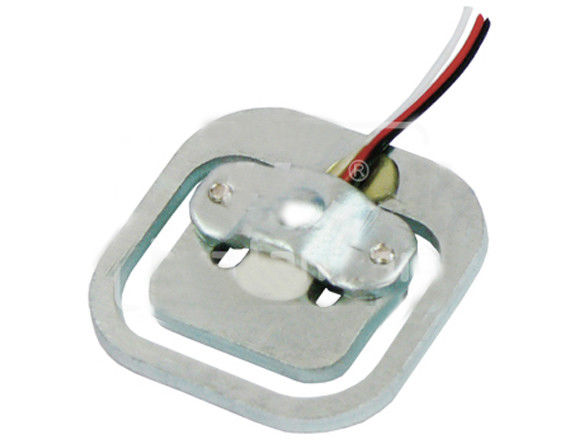30kg 50kg Tension and Compression load cell miniature accuracy CZL902
Product Details:
| Place of Origin: | DONGGUAN,GUANGDONG,CHINA |
| Brand Name: | UCHI |
| Certification: | SGS.ISO. |
| Model Number: | CZL902 |
Payment & Shipping Terms:
| Minimum Order Quantity: | 500pcs |
|---|---|
| Price: | Negotiable |
| Packaging Details: | Bulk |
| Delivery Time: | 10 workdays |
| Payment Terms: | T/T, Western Union, MoneyGram |
| Supply Ability: | 500000pcs |
|
Detail Information |
|||
| Product Name: | Tension And Compression Load Cells | Material: | Aluminium Alloy |
|---|---|---|---|
| Surface: | Anodized Treatment | Protection: | IP65 |
| Application: | Body Scales | PN: | CZL902 |
| Production Process: | Normal Wirewound | HS Code: | 9031809090 |
| Transform Type: | Resistance Strain | Output Signal Type: | Analog Type |
| Highlight: | load cell miniature,miniature load cell |
||
Product Description
30kg 50kg Tension and Compression load cell miniature accuracy CZL902
Quick details
Model: CZL902
Category: micro load cell
Range: 30kg , 50kg.
Dimension: 30.2*35.5*11.2mm
Material: alloy steel
Application: handle scale,kitchen scale,fish scale,post scale
Characteristic: micro load cell, miniature load cell,miniature weight sensor
![]()
Introduction
A load cell is a force sensing module - a carefully designed metal structure, with small elements called strain gauges mounted in precise locations on the structure. Load cells are designed to measure a specific force, and ignore other forces being applied. The electrical signal output by the load cell is very small and requires specialized amplification. Fortunately, the 1046 PhidgetBridge will perform all the amplification and measurement of the electrical output.
Load cells are designed to measure force in one direction. They will often measure force in other directions, but the sensor sensitivity will be different, since parts of the load cell operating under compression are now in tension, and vice versa.
This Single Point Load Cell is used in small jewelry scales and kitchen scales. It’s mounted by bolting down the end of the load cell where the wires are attached, and applying force on the other end in the direction of the arrow. Where the force is applied is not critical, as this load cell measures a shearing effect on the beam, not the bending of the beam. If you mount a small platform on the load cell, as would be done in a small scale, this load cell provides accurate readings regardless of the position of the load on the platform.
Product specifications
| 1. Rated Load | 30, 50 (Kg) |
| 2. Rated Output | 1.0±0.15 mV/V |
| 3. Zero Balance | ±30%F.S |
| 4. Input Resistance | 1000±50Ω |
| 5. Output Resistance | 1000±50Ω |
| 6. Excitation Voltage | 9-12VDC |
| 7. Nonlinearity | 0.2%F.S |
| 8. Hysteresis | 0.2%F.S |
| 9. Repeatability | 0.2%F.S |
| 10.Creep(30min) | 0.2%F.S |
| 11.Operating Temperature | -10℃ To +50℃ |
| 12.Temperature Effect on Zero | 0.2%F.S/10℃ |
| 13.Temperature Effect on Span | 0.2%F.S/10℃ |
| 14.Insulation Resistance | 2000MΩ(50VDC) |
| 15. Safe Overload | 150%F.S |
| 16.Ultimate Overload | 200%FS |
| 17. Cable |
420mm |
NumberType="1" TCSC="0" w:st="on">5mm 4-wire shielding cable)
How they work
Strain-gauge load cells convert the load acting on them into electrical signals. The measuring is done with very small resistor patterns called strain gauges - effectively small, flexible circuit boards. The gauges are bonded onto a beam or structural member that deforms when weight is applied, in turn deforming the strain-gauge. As the strain gauge is deformed, it’s electrical resistance changes in proportion to the load.
The changes to the circuit caused by force is much smaller than the changes caused by variation in temperature. Higher quality load cells cancel out the effects of temperature using two techniques. By matching the expansion rate of the strain gauge to the expansion rate of the metal it’s mounted on, undue strain on the gauges can be avoided as the load cell warms up and cools down. The most important method of temperature compensation involves using multiple strain gauges, which all respond to the change in temperature with the same change in resistance. Some load cell designs use gauges which are never subjected to any force, but only serve to counterbalance the temperature effects on the gauges that measuring force. Most designs use 4 strain gauges, some in compression, some under tension, which maximizes the sensitivity of the load cell, and automatically cancels the effect of temperature.
Other types of load cell exist which have half bridges (2 strain gauges) or quarter bridges but they require additional hardware to operate since you must complete the bridge to get the most accurate readings.
What is a Wheatstone bridge?
A Wheatstone bridge is an electrical circuit used to measure and unknown resistance by balancing 2 legs of a bridge circuit. One leg of which contains the unknown value. Wheatstone bridges are made up of 4 resistors or loads in a square with a voltage meter bridging 2 corners of the square and power/ground connected to the other corners. In the case of a load cell, these resistors are strain gauges.
Installation
A single-point load cell. Applying force to one end creates stress in the bar, causing the strain gauge encased in the white plastic to flex.This Single Point Load Cell is used in small jewelry scales and kitchen scales. It’s mounted by bolting down the end of the load cell where the wires are attached, and applying force on the other end in the direction of the arrow. Where the force is applied is not critical, as this load cell measures a shearing effect on the beam, not the bending of the beam. If you mount a small platform on the load cell, as would be done in a small scale, this load cell provides accurate readings regardless of the position of the load on the platform.
Button Load Cells
A button load cell. Applying force to the bump in the middle of the cell causes a change in the output.This Button Load Cell is used in applications that require a thin form factor. The bottom of the load cell is bolted, and force applied to the button on the top. By loading only the button, which is slightly rounded, the load cell is less sensitive to errors resulting from the load not pushing down exactly straight on the load cell.



